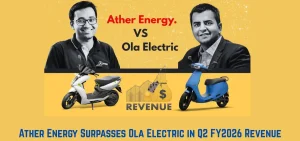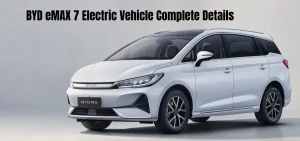As the EV revolution gains momentum, “Bajaj Plans Electric Bikes as EV Market Slowly Rises” is turning heads across the industry. With scooters leading the charge and electric motorcycles still waiting for their breakthrough moment, Bajaj Auto is preparing for a bold shift. The company is developing an all-new electric bike platform that could completely reshape India’s e-mobility landscape. But what exactly is Bajaj planning—and why now? The answers may surprise you.
Bajaj’s Big Step Into Electric Motorcycles
Bajaj Auto has officially confirmed the development of a brand-new, fully in-house electric motorcycle platform. Unlike past models where EVs were built on modified ICE structures, this platform is designed entirely from scratch. It will serve as the foundation for multiple electric bikes—from daily commuter models to more premium, performance-oriented motorcycles.
While the electric motorcycle category is still in its early stages—representing less than 1% of electric two-wheeler sales—Bajaj believes this is precisely the right moment to prepare. The company aims to enter the segment when consumer demand becomes more predictable. According to Bajaj, the bigger risk lies not in entering too early, but in missing the opportunity altogether.
Strengthening the Electric Scooter Portfolio
Bajaj’s EV journey has already gained traction through the Chetak electric scooter. After overcoming production challenges earlier this year, Bajaj diversified its magnet sourcing and bounced back strongly. In October, Chetak reclaimed its position at the top of Vahan registrations for electric two-wheelers.
Further expanding this momentum, Bajaj plans to introduce a new Chetak model in early 2026. The aim is to strengthen its electric scooter lineup and compete more effectively with leading players like Ola Electric, TVS, and Ather.
In FY2025 alone, Bajaj sold 230,808 Chetak units—an impressive 116% year-on-year growth.
Broader EV Expansion: Three-Wheelers and Exports
Beyond scooters and motorcycles, Bajaj is also working on electric three-wheelers and export-focused EV models. The company is leveraging its strong retail network—over 4,000 touchpoints across 800 cities—to make EVs more accessible across India. This extensive infrastructure gives Bajaj a significant advantage in scaling EV adoption in both domestic and global markets.
Indian EV Market: Growing, Competitive, and Full of Potential
The Indian electric two-wheeler market reached over 1.15 million units sold in 2024, marking a 33% increase from the previous year. EV penetration is expected to exceed 7% by FY28, supported by several factors:
- Lower running costs
- Government incentives
- Improved battery technology and infrastructure
Electric two-wheelers accounted for 58% of all EV sales in FY2025, highlighting their dominance.
However, electric motorcycles remain a niche segment. High battery costs, range limitations, and a lack of diverse models have slowed growth. But with major players like Bajaj now entering the space, the segment is expected to accelerate significantly.

Conclusion
Bajaj’s decision to develop a dedicated electric bike platform signals a long-term commitment to India’s EV future. With a rapidly growing market, rising consumer interest, and a stronger ecosystem, the timing couldn’t be better. As Bajaj expands its electric scooters, builds advanced electric motorcycles, and strengthens its EV footprint across India, the company is positioning itself as a key leader in the next phase of electric mobility.
Related Articles:-





